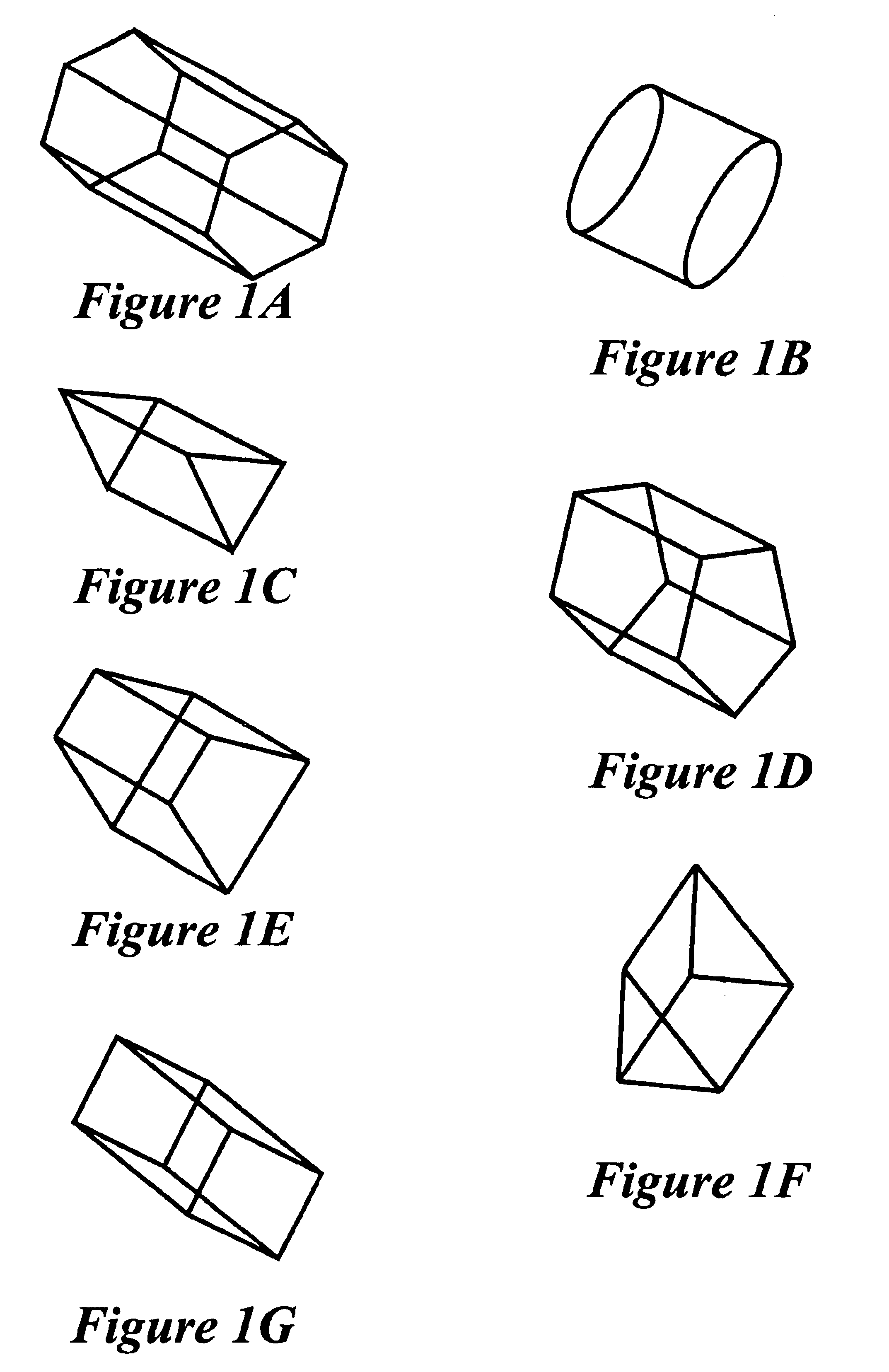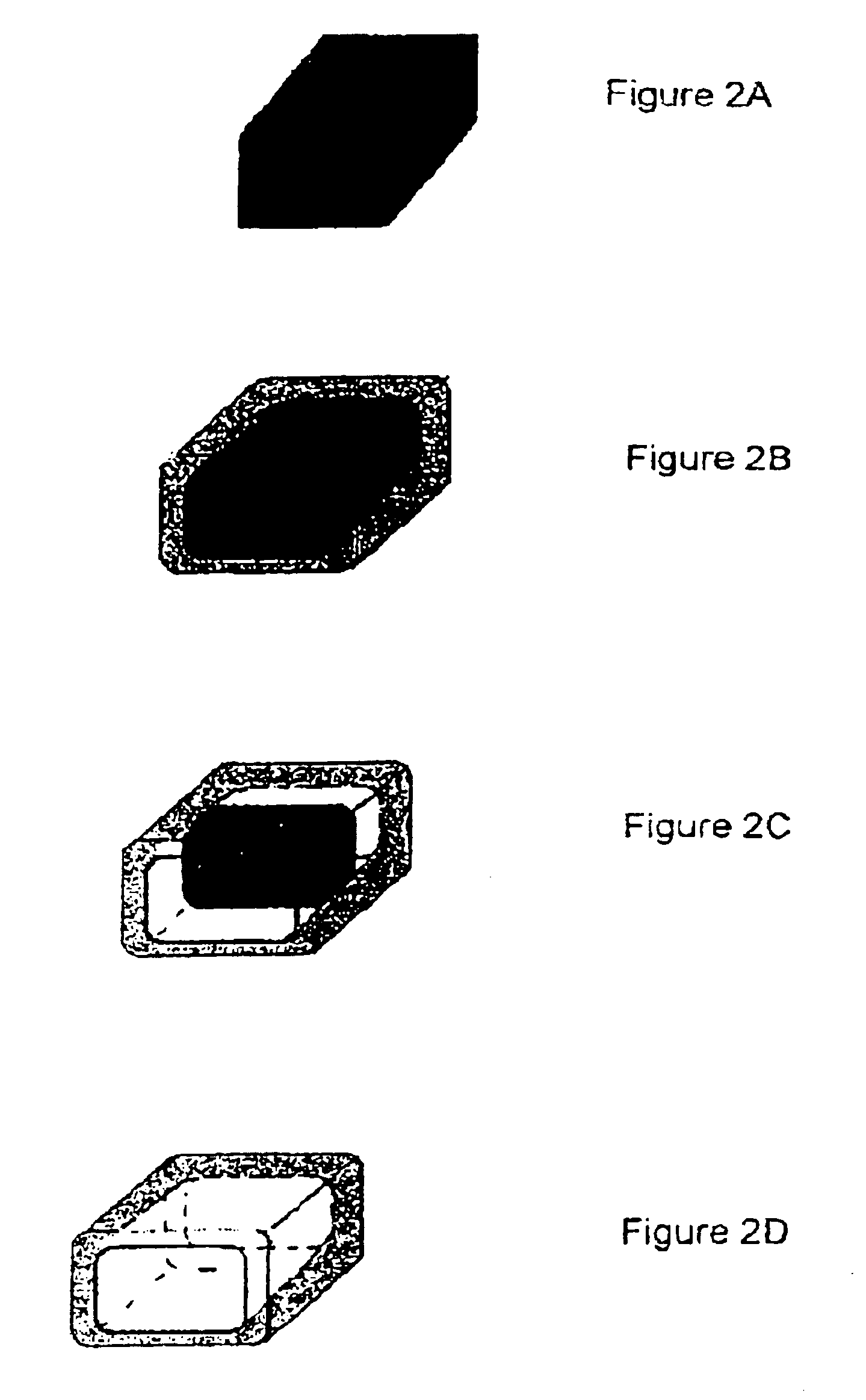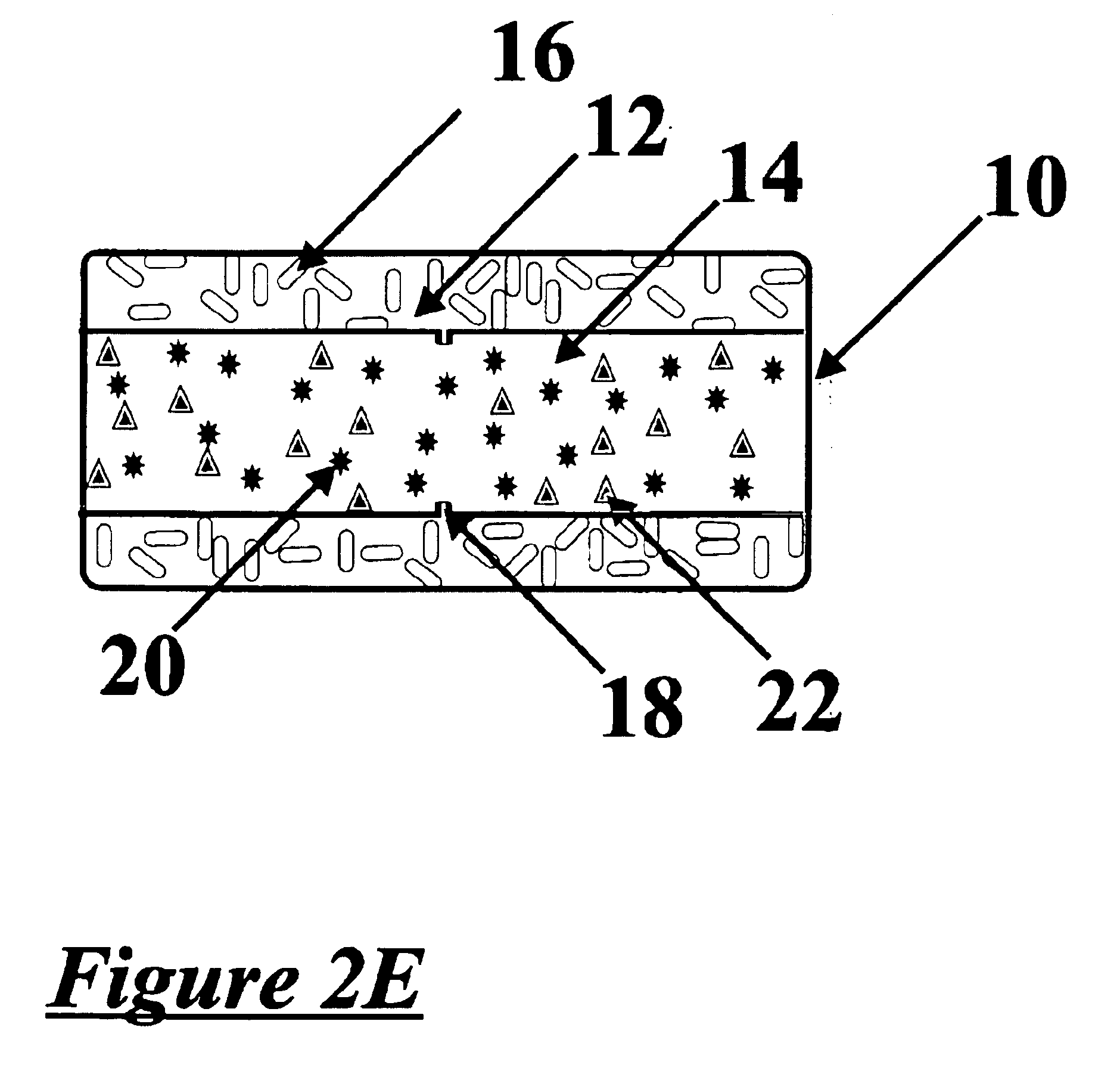Chemical delivery device
a chemical delivery and controlled release technology, applied in the direction of pill delivery, pharmaceutical non-active ingredients, coatings, etc., can solve the problems of poor patient compliance, ghost residues, and standard tablets, and achieve the effects of easy modulation, increased mechanical strength, and added mechanical strength and stability
- Summary
- Abstract
- Description
- Claims
- Application Information
AI Technical Summary
Benefits of technology
Problems solved by technology
Method used
Image
Examples
example 1
Dry Granulation Method for Core Compression
[0068]In an appropriate blender, the chemical is blended with a dissolution regulator which comprise the dissolution-based core. If required a soluble or insoluble diluent may also be added. Suitable polymers and diluents are known in the art and examples are described above. The blend may be milled and sieved, if desired, through a sieve with an appropriate size mesh, the mesh size is chosen according to the application. The blend is then mixed with a lubricant and the lubricated blend is compressed on a conventional rotary or single punch machine, examples of which are known in the art, into a tablet core of the appropriate shape and size.
example 2
Wet Granulation Method for Core Compression
[0069]In an appropriate blender, the chemical is blended with either a slow dissolving polymer—which comprise the shaped core. If required a soluble or insoluble diluent may also be added. The blend is subsequently granulated with water or an organic solvent or a mixture of water and an organic solvent. Alternatively a slow dissolving or dispersing polymer may be dissolved or dispersed in a solvent and added to the blend while mixing continuously. The mixture thus granulated is then dried at a suitable temperature and milled through a screen with an appropriate opening. The granules prepared are then mixed with a soluble or insoluble lubricant. The lubricated granules are compressed into a tablet core of the appropriate shape. Examples of suitable core compressing machines that may be used are known in the art and supplied by, for example Killian & Co. Inc. (Pennsylvania, USA), Thomas Engineering (Illinois, USA) and Fette America Inc. (New ...
example 3
Dry Granulation Method for Coating
[0070]An insoluble polymer and optionally a pore-former and / or a plasticizer are mixed in a suitable blender, and then the blend may be milled through a screen with an appropriate size mesh. The milled blend is lubricated with a soluble or insoluble lubricant. The core is covered with the blend and the coating applied by compression.
PUM
| Property | Measurement | Unit |
|---|---|---|
| Fraction | aaaaa | aaaaa |
| Time | aaaaa | aaaaa |
Abstract
Description
Claims
Application Information
 Login to View More
Login to View More - R&D
- Intellectual Property
- Life Sciences
- Materials
- Tech Scout
- Unparalleled Data Quality
- Higher Quality Content
- 60% Fewer Hallucinations
Browse by: Latest US Patents, China's latest patents, Technical Efficacy Thesaurus, Application Domain, Technology Topic, Popular Technical Reports.
© 2025 PatSnap. All rights reserved.Legal|Privacy policy|Modern Slavery Act Transparency Statement|Sitemap|About US| Contact US: help@patsnap.com



